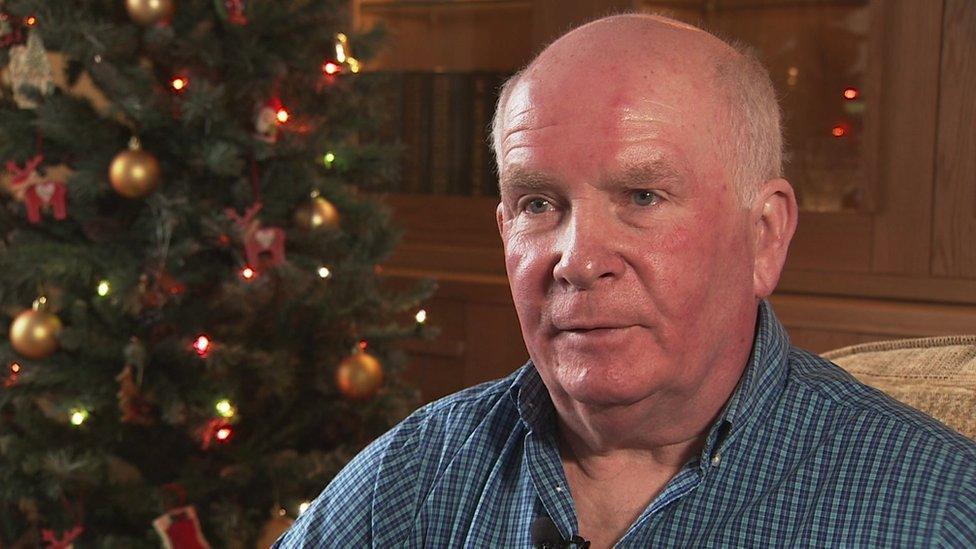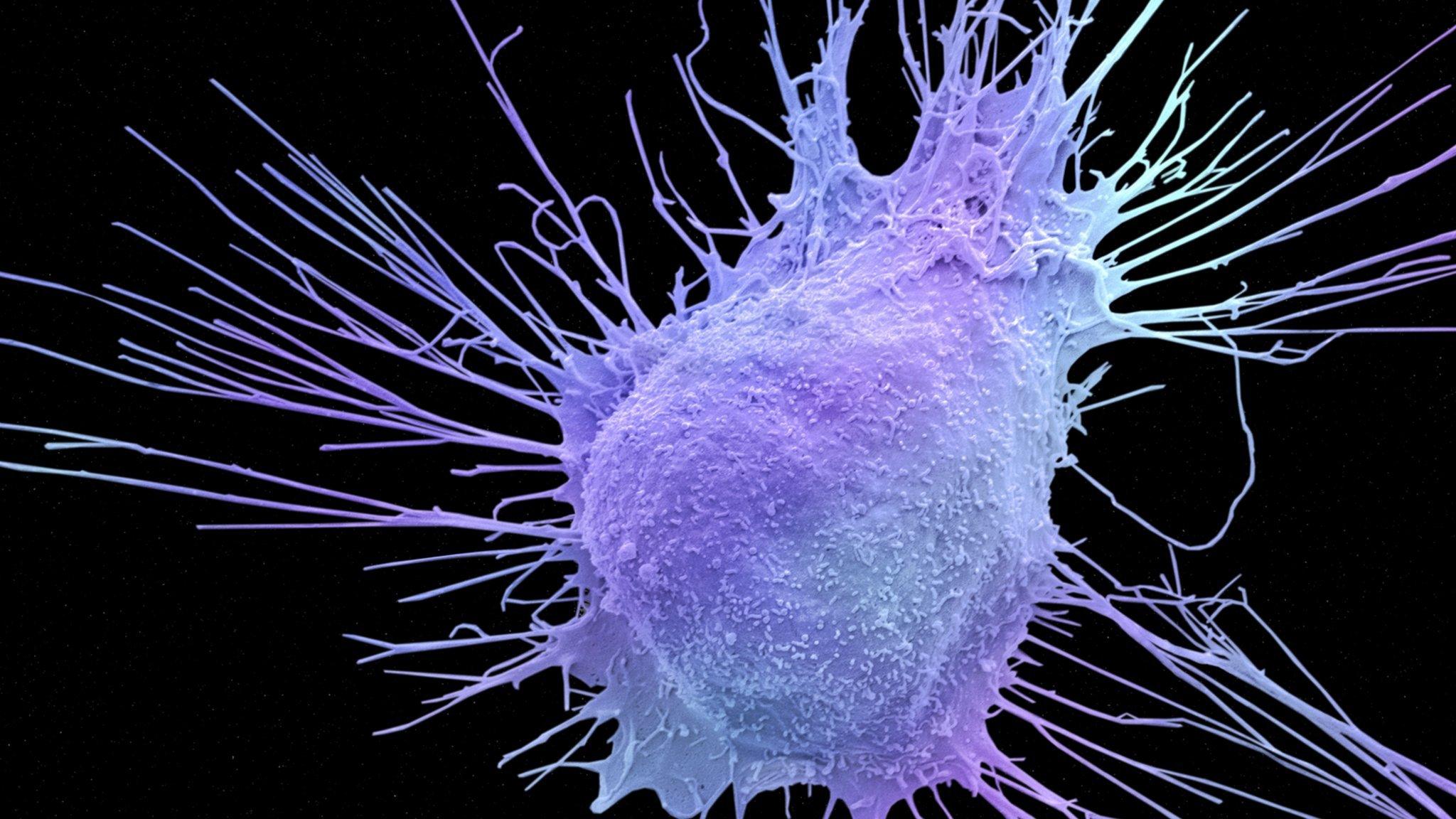Prostate cancer laser treatment 'truly transformative'
- Published
Professor Mark Emberton explains on Radio 4's Today the significance of new cancer treatment
Surgeons have described a new treatment for early stage prostate cancer as "truly transformative".
The approach, tested across Europe, uses lasers and a drug made from deep sea bacteria to eliminate tumours, but without causing severe side effects.
Trials on 413 men - published in The Lancet Oncology - showed nearly half of them had no remaining trace of cancer.
Lifelong impotence and incontinence are often the price of treating prostate cancer with surgery or radiotherapy.
Up to nine-in-10 patients develop erectile problems, external and up to a fifth struggle to control their bladders.
That is why many men with an early stage tumour choose to "wait and see" and have treatment only when it starts growing aggressively.
"This changes everything," said Prof Mark Emberton, who tested the technique at University College London.
Triggered to kill
The new treatment uses a drug, made from bacteria that live in the almost total darkness of the seafloor and which become toxic only when exposed to light.
Ten fibre optic lasers are inserted through the perineum - the gap between the anus and the testes - and into the cancerous prostate gland.
When the red laser is switched on, it activates the drug to kill the cancer and leaves the healthy prostate behind.

The trial - at 47 hospitals across Europe - showed 49% of patients went into complete remission.
And during the follow-up, only 6% of patients needed to have the prostate removed, compared with 30% of patients that did not have the new therapy.
Crucially, the impact on sexual activity and urination lasted no more than three months.
No men had significant side effects after two years.
Gerald Capon, 68 and from West Sussex, told the BBC: "I'm totally cured and free of the cancer.
"I feel incredibly lucky that I was accepted for the trial... I feel that my life ahead is worry free."
He was out of hospital the day after the treatment.

Patient Gerald Capon says he feels incredibly lucky
Prof Emberton said the technology could be as significant for men as the move from removing the whole breast to just the lump in women with breast cancer.
He said: "Traditionally the decision to have treatment has always been a balance of benefits and harms.
"The harms have always been the side effects - urinary incontinence and sexual difficulties in the majority of men.
"To have a new treatment now that we can administer, to men who are eligible, that is virtually free of those side effects, is truly transformative."
11,000 deaths
More than 46,000 men are diagnosed with prostate cancer in the UK each year.
The tumours tend to grow slowly, but still around 11,000 men die from the disease.
However, the new treatment is not yet available for patients. It will be assessed by regulators at the beginning of next year.
Other therapies to kill prostate cancers, such as very focused ultrasound - known as focal Hifu - have a lower risk of side effects.
But these treatments are not universally available.
Dr Matthew Hobbs, from the charity Prostate Cancer UK, said the technology could help men who face the conundrum of whether or not to have treatment.
"Focal therapy treatments like this one have the potential to offer a middle ground option for some men with cancer that has not spread outside the prostate," he said.
Caution urged
He said the next challenge would be to find out which patients should still wait and see, which ones should have this type of therapy, and which should have more invasive treatments.
"Until we know the answer to this question, it is important that these results do not lead to the over-treatment of men with low risk cancer, or the under treatment of men at higher risk."
The technology was developed at the Weizmann Institute of Science in Israel alongside Steba Biotech.
Follow James on Twitter, external.
- Published15 September 2016

- Published22 April 2016

- Published29 October 2015
